If there was a place I would like to settle down in, it would be Comporta. For me, this answers the question, What’s the best village in Portugal? Clearly there is plenty more to see, although when a place gets under your skin so emphatically, it’s only right to label it ‘my best’. Nestled on the Sado Estuary south of Libson, Comporta has so much to offer its visitors. Let me see if I can draw you into why this place wins our ‘best village’ accolade.
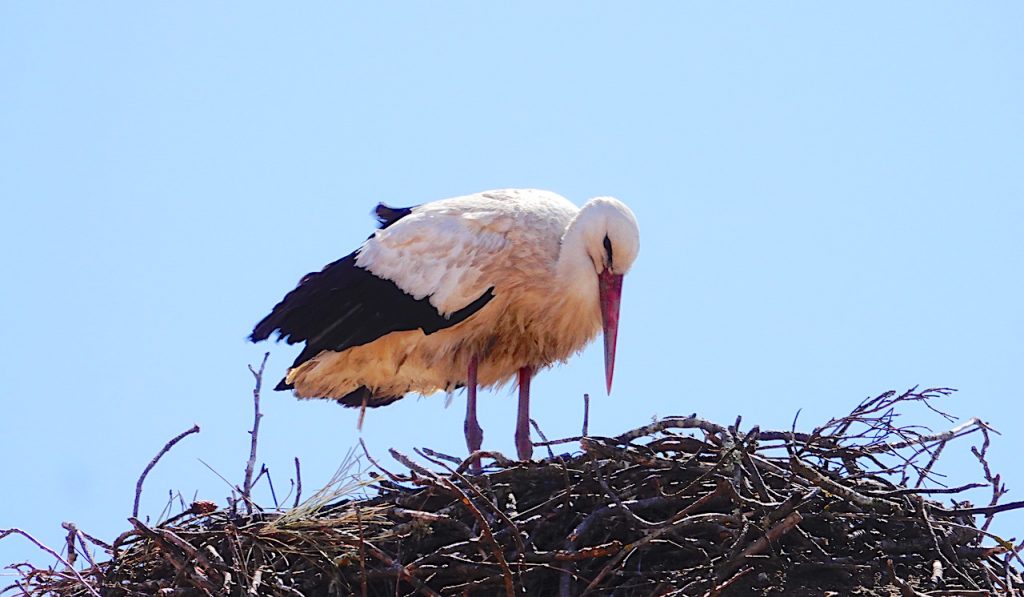
Comporta is a true haven of peace. It offers us a chance to grab at both its natural beauty and harness the tranquility that being off the beaten track awards us. With its three dimensional environment, there’s so much to experience; to walk barefoot along the elongated, white sandy beaches of the Atlantic Ocean. To marvel at the fishing culture, Roman history and birdlife of the Sado Estuary Nature reserve. And, be fascinated by Comporta’s iconic rice fields, a practice so rare in Portugal. And to top it all, Comporta’s emblem, the storks, are at the heart of this community, staking their claim upon every lofty landmark in this small village.
The storks have historically migrated south to Africa for the winter, returning in February to begin nesting and mating. Yet as the jet streams narrow and the winter weather warms the air here in Portugal, the storks have taken refuge in Comporta throughout the year. Without song, these birds, which are the largest wading birds in the world, chatter to each other, using their beaks, a sound that you will soon become familiar with, especially when a pair are courting.

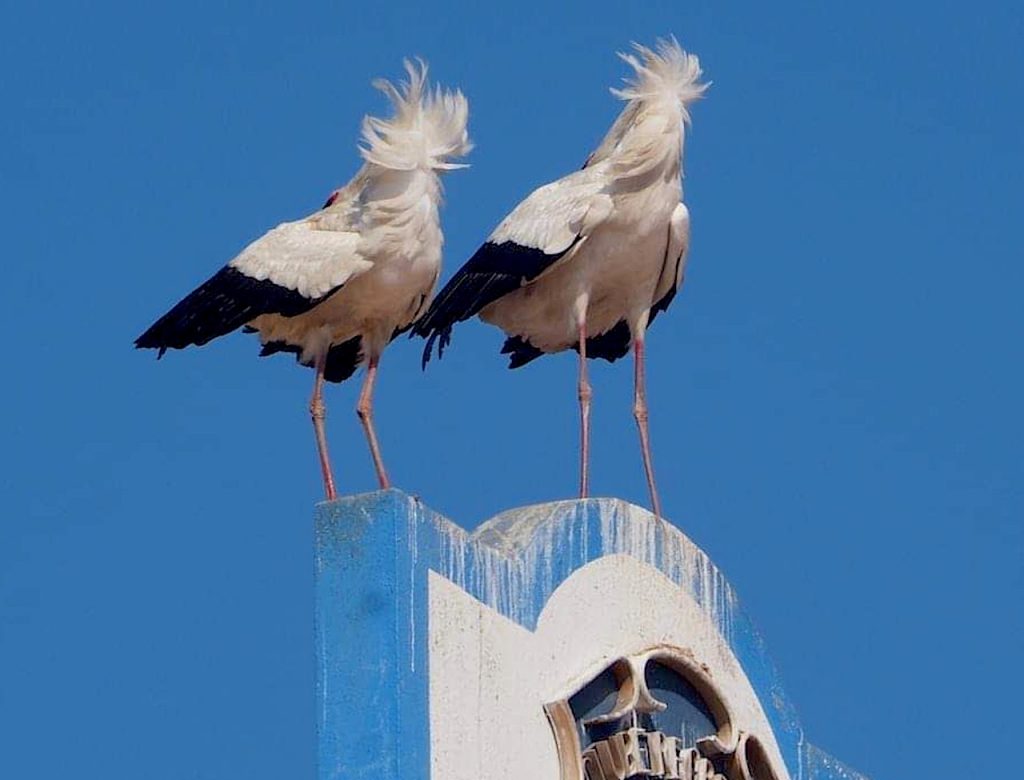
Praia de Comporta is beach lover’s paradise, with miles of white sands that seem to stretch as far as the eye can see. With a beach café and a restaurant, this is an archetypal destination for sun worshipers and setting sun lovers. The shells along the beach will have you combing the shoreline, whilst the sea breezes and the sound of the crashing waves take you back to your childhood. The further down the Troia peninsula you travel the more built up the area becomes, with posh hotels and villas that the ‘A’ listers and Lisboetas claim as their ‘second homes.’ Yet the closer to Comporta you stay, the more rural and authentic it feels. The sand dunes and pine trees, not only frame this beautiful Blue Flag beach, they provide essential protection from the nippy winds that whip up from the ocean’s vastness. With wildlife aplenty in these protected dunes, nature seekers will revel in the carpets of flowers and abundant bird species, whilst admiring the amount of life that can be supported by sand.
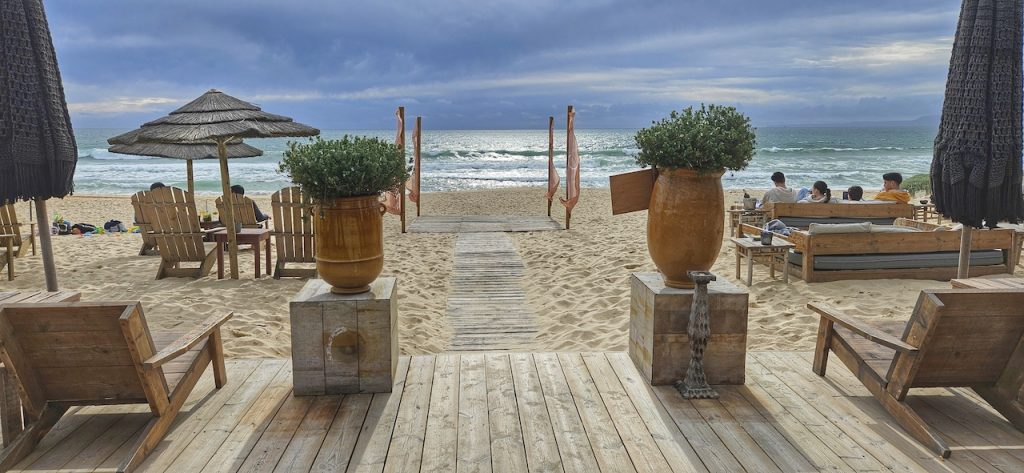
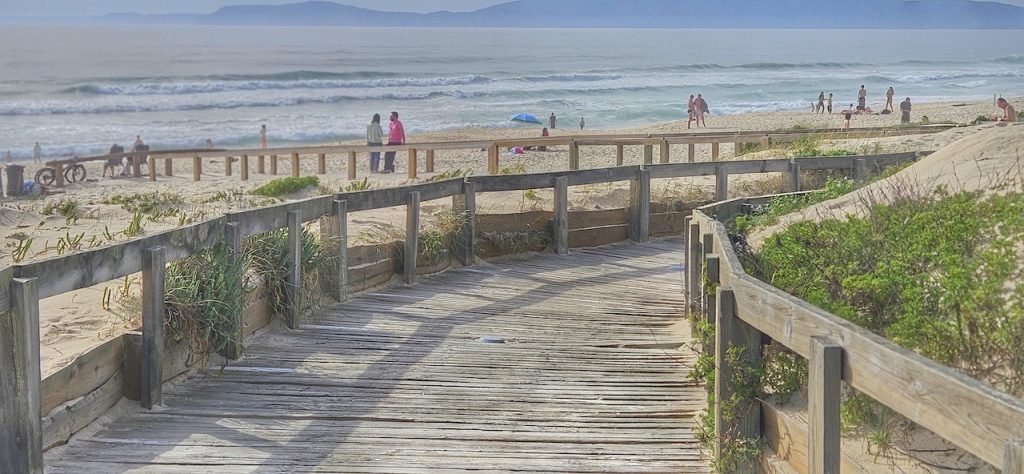
Comporta’s Rice Fields date back a century when the fields were planted by hand. These days, more modern approaches are used, with planes scattering seeds from the air, allowing a more random placement. Protected by the dunes from the harsh Atlantic winds, the conditions for the rice, that are so unique in Portugal, thrive. There’s a museum in the village where you can buy and learn about rice cultivation here. The rice fields shape and colour the landscape throughout the year and their irrigation channels and pathways, make for great walking and cycling around the whole estuary, as you are serenaded by a chorus of frogs.
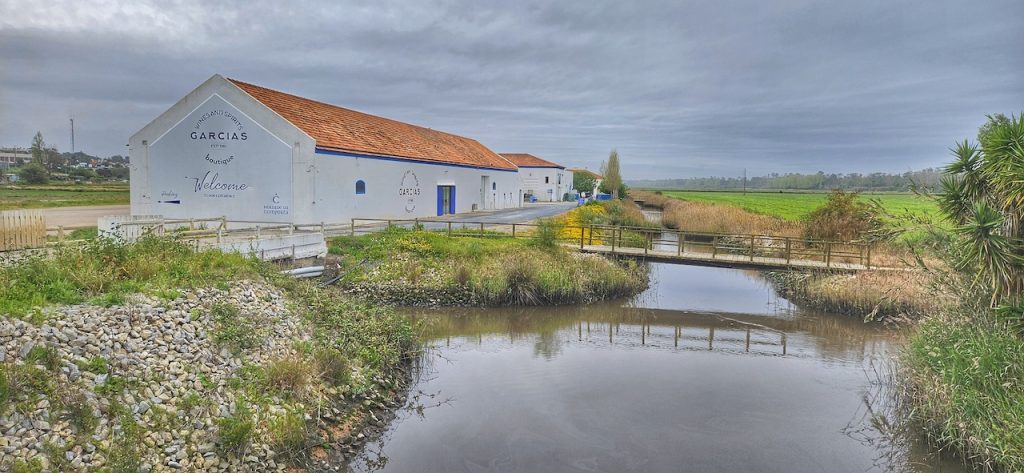
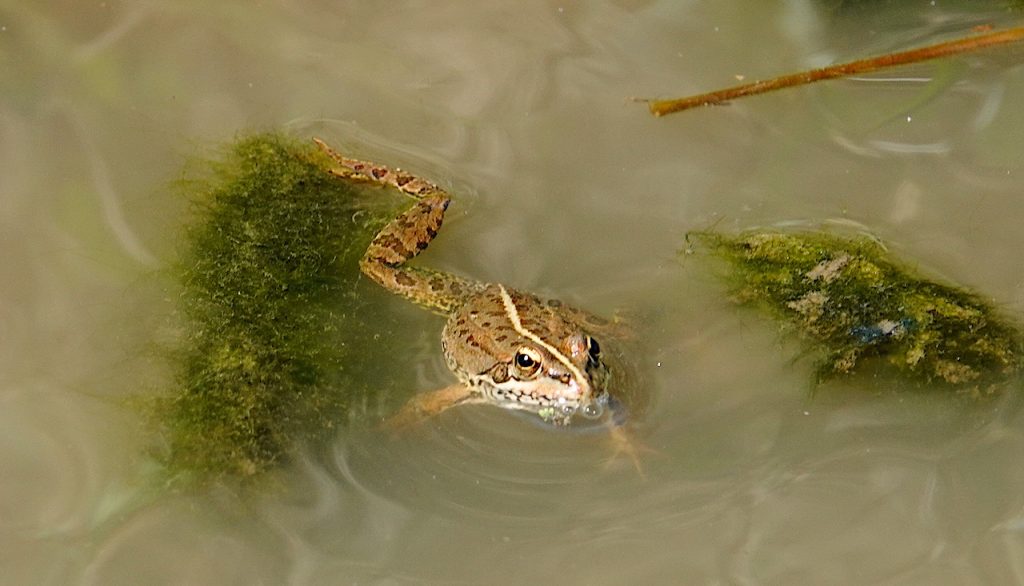
Porto Palafita da Carrasqueira, is a picturesque fishing community just 3.5 miles from Comporta. You can cycle on the quiet roads or via the myriad of paths that weave around the salt-flats and rice fields. This is the most traditional of villages in the area, and it is here where you can capture life on the ocean waves, as fishermen brave the conditions of the tempestuous estuary waters to make their livelihoods. Constructed in the 1950’s, this port built on stilts gives you a real sense of the hardship that the fishermen must endure. The ramshackled nature of the pontoons create a feeling of fear with each step you take, emulating perhaps, emulating the fishermen’s thoughts on a stormy day. Whether you visit at low tide or high, the characterful port will charm you and give photographers a haven for snaps. We’ve visited twice with different tidal influences, and on both occasions it has been a real treat. Twigs and branches are commonplace here, seemingly holding up the boards beneath your feet. You can drive a motorhome here, although the access road is bumpy and turning space is limited. So we suggest that you park in the village and take a short walk to the shore.
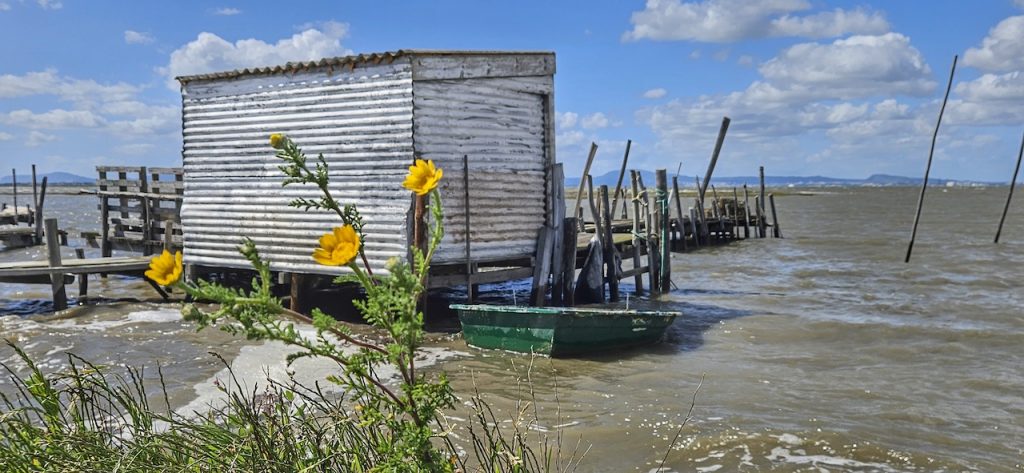
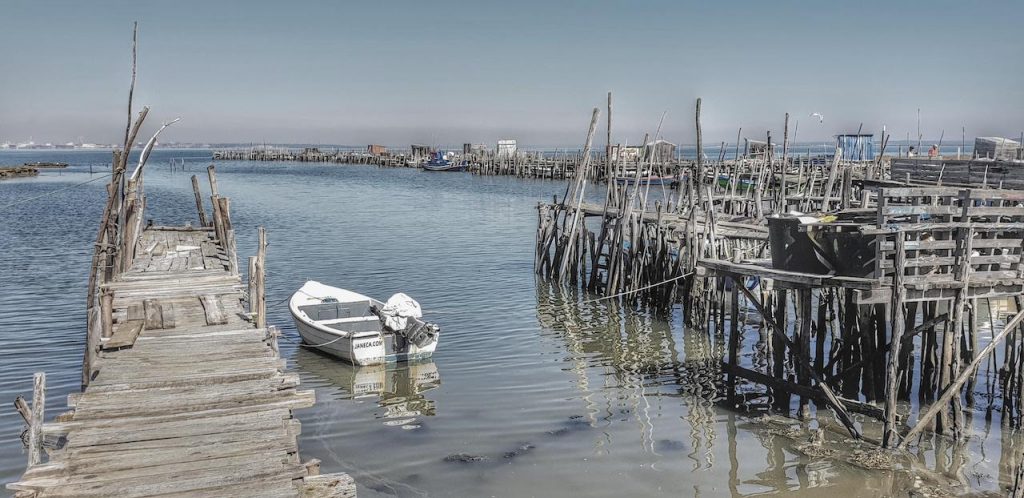
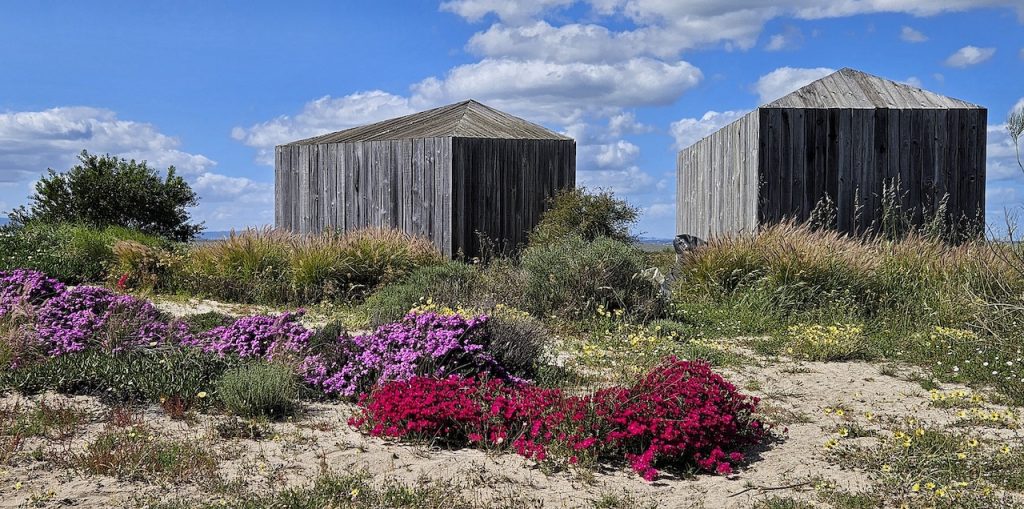
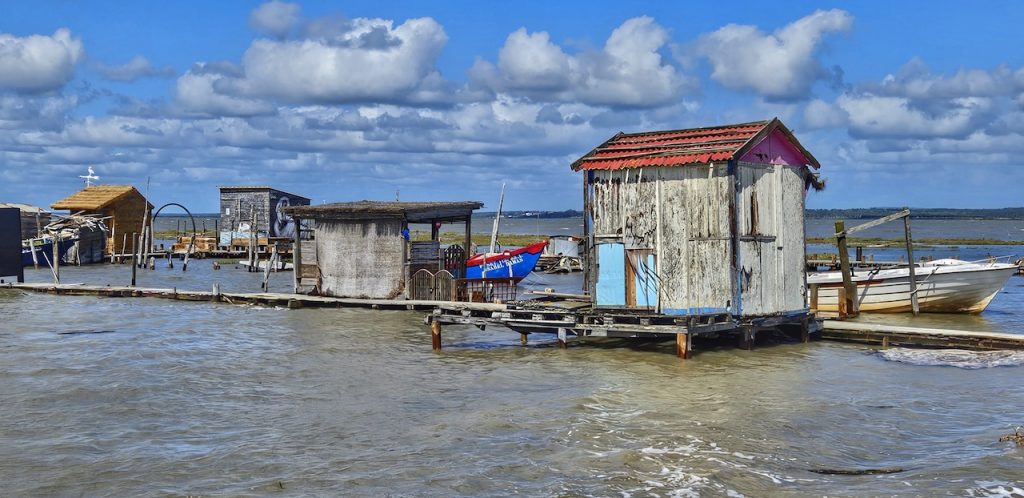
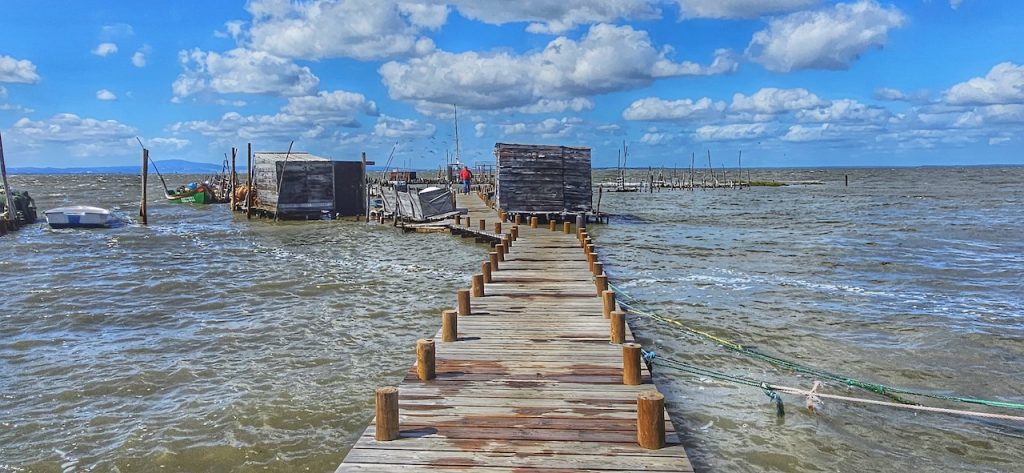
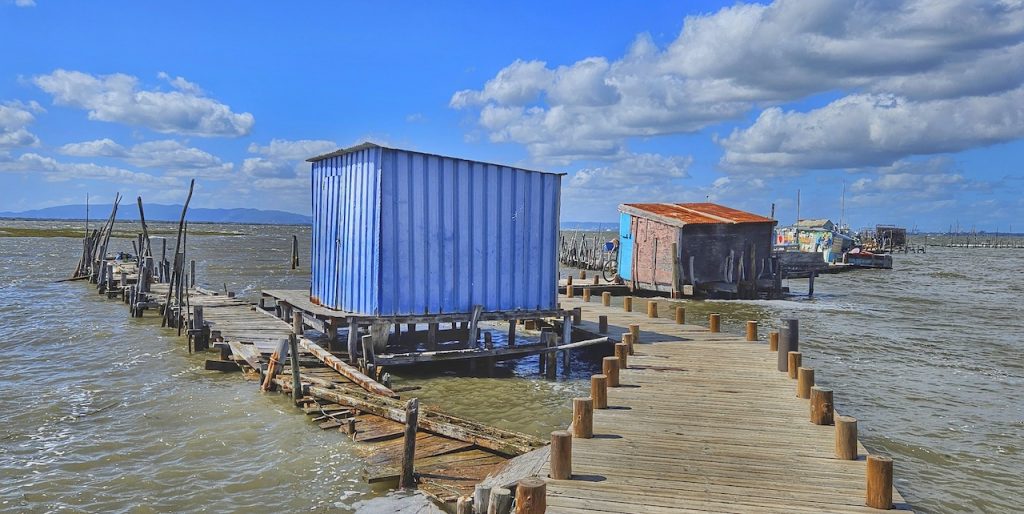
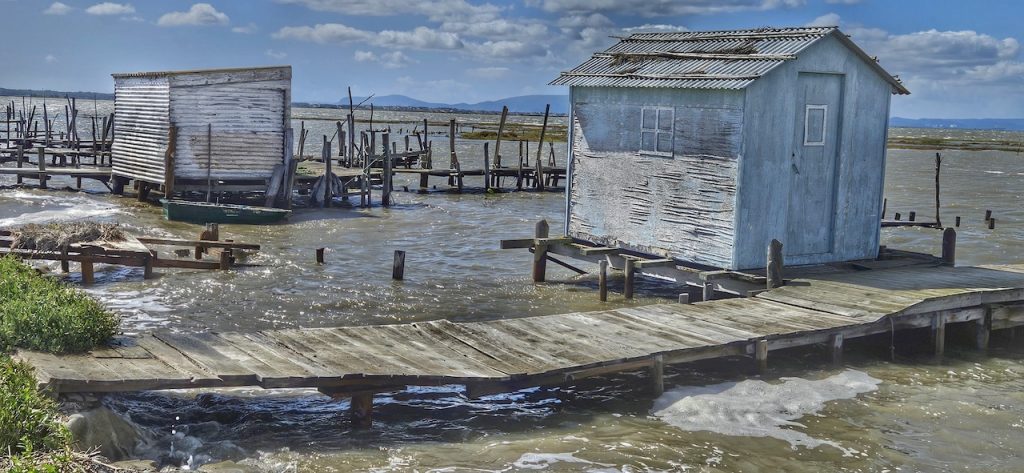
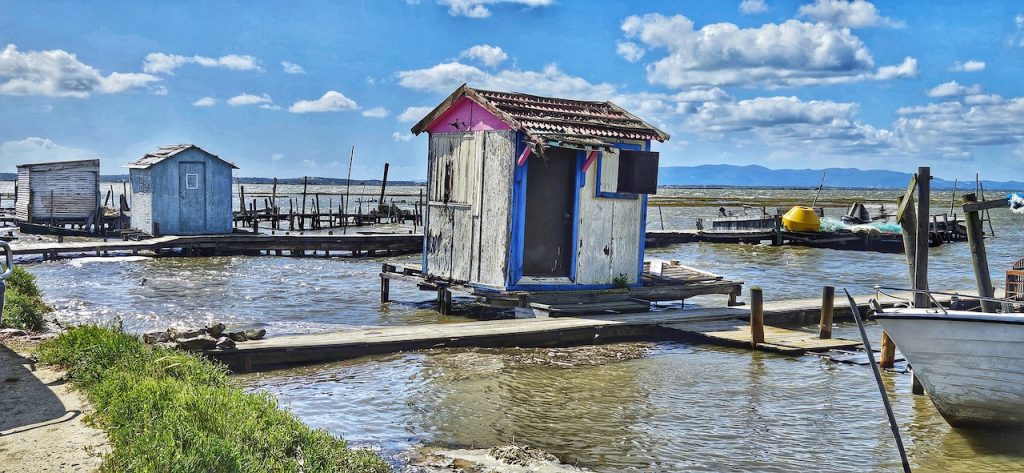
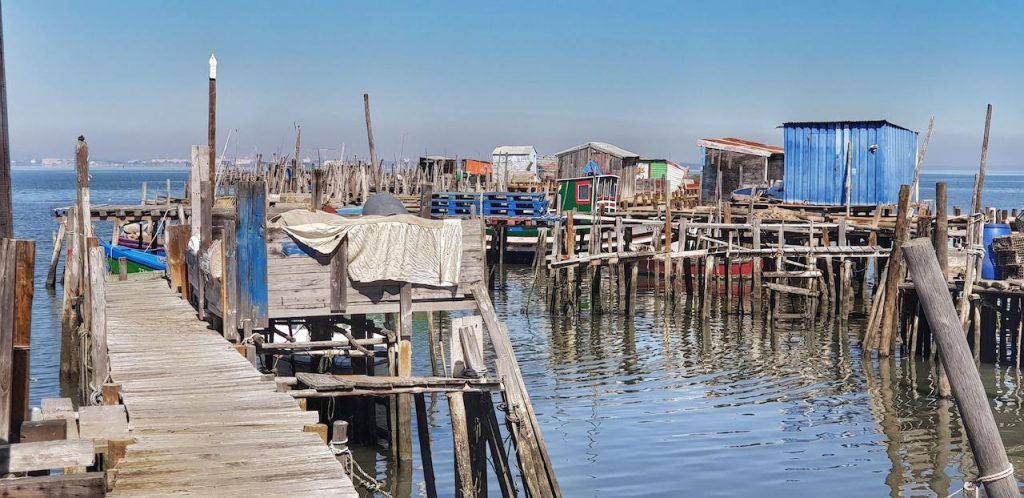
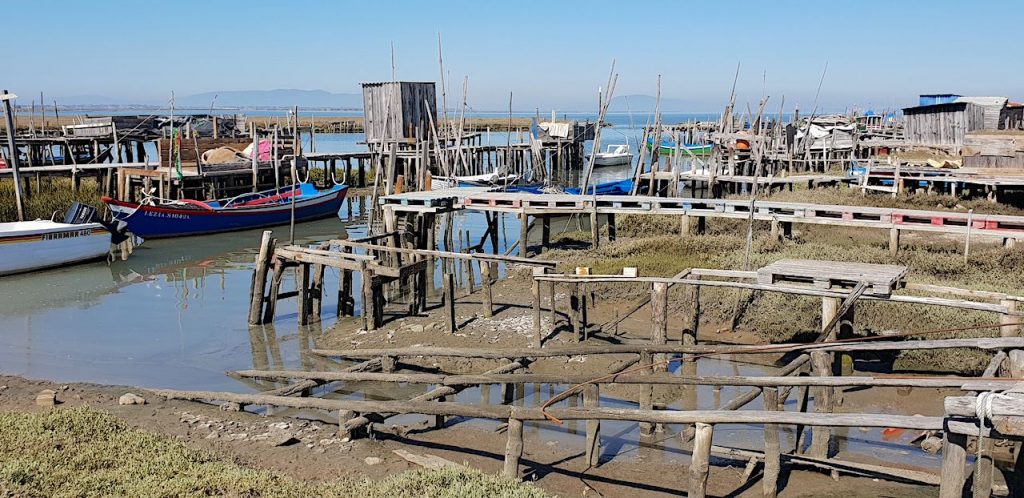
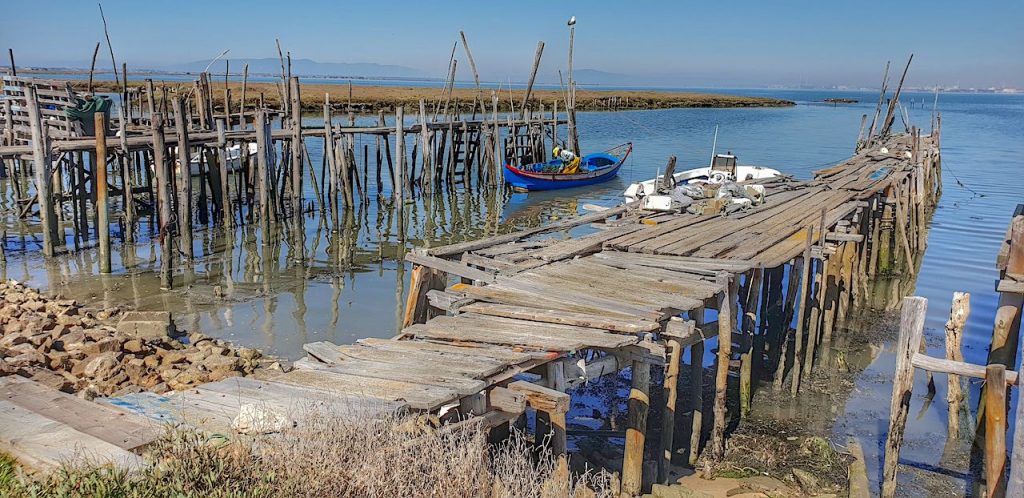
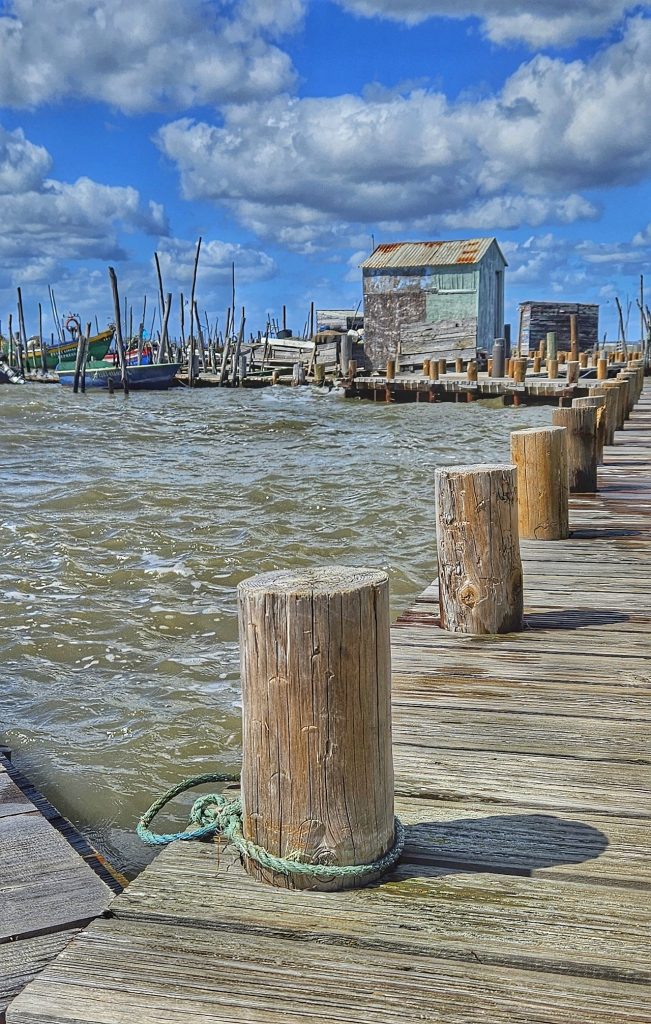
For a bit of Roman history, take a drive or cycle down the Troia peninsula during the summer months. A fairly quiet road awards you with a pleasurable 10 mile cycle, giving access to views across the estuary. On top of this are the Roman remains of the Fish Salting industry, occupied until the 6th century. It is tentatively on the UNESCO Heritage List. It is open for guided tours (€7.5pp) or self-guided (€6) from June to September. Please note that the area is closed between 1-6 August for the local festival.
Staying in Comporta with a motorhome is easy enough. There’s a fabulous Aire just on the fringes of the village centre, where the market is set up on the 2nd Friday of the month. So on this day, staying in the Aire is not permitted. Otherwise, free overnight stays with services are absolutely welcomed. And in return, why not visit one of the many amazing restaurants in the village. We loved Be Comporta, which serves up incredible food, craft beers and a relaxing vibe.
For other accommodation, of which there is plenty, check this out, or of course Booking.com.
To reach Comporta, there are two options. Firstly there are the road routes; north from Grândola, west from Évora or south from Libson or Setúbal. Secondly, to short cut your journey to or from Lisbon, why not consider taking the ferry from Troia to Setúbal. If you’re on foot, you have the catamaran, or the car ferry, both with Atlantic Ferries . Until our visit in 2024 we had always arrived by road. Although on this occasion, we decided to give the ferry a go. Because there was little information on line about whether motorhomes could navigate the ferry’s entry/exit (especially with a low-slung rear end) we thought it would be helpful to others. Click the image below for a link to our YouTube video showing you what the ferry is like for motorhomes. It cost us €47 for a return ferry (which includes a 10% discount) for a van and 2 people. The ferry departs every hour from 0730 from Setúbal and 0800 from Troia, which is just a 10 mile drive away from Comporta. It’s a great way to cross the estuary and save a bit of time, fuel and wear and tear on your vehicle. Plus, and perhaps more importantly, it’s a fun way to travel.
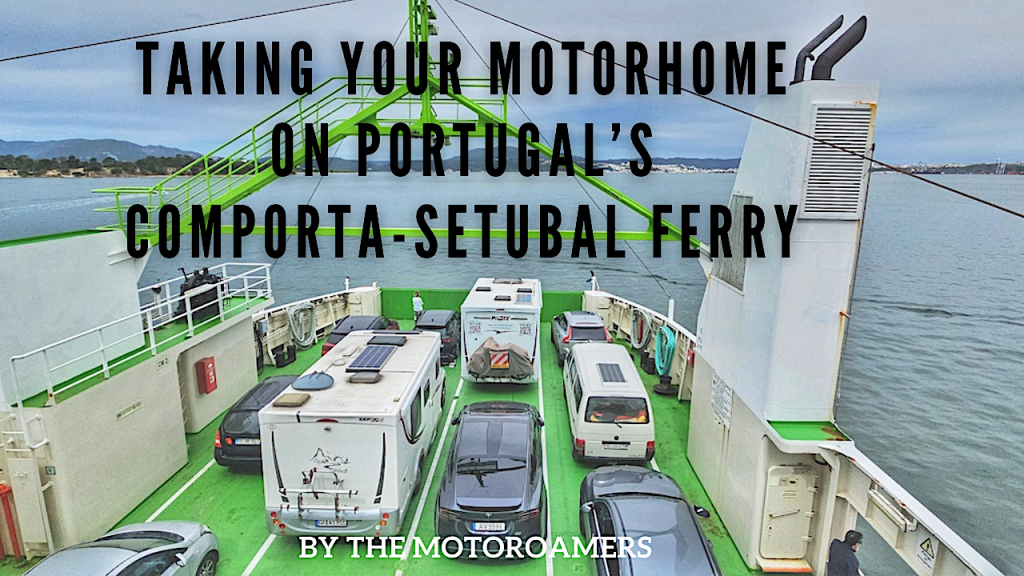
Walking around Comporta’s white washed, trimmed with blue village, with its deserted streets, creates an instant calm. Except for the chatter of the storks who nest high above you, the peace is palpable. The charm of this authentic rice growing fishing village hooks you in, like the bait of a fishing rod. The beach offers you the raw power of the Atlantic, whilst the port of stilts at Carrasqueira is mesmerising and commands respect from each one of us. I love this place and all that it represents. And whilst, for now, it remains undeveloped, Comporta holds an authenticity that, if you just open your heart, will captivate you and leave you wanting more.
For more blogs on our explorations of Portugal, click here.
/Karen

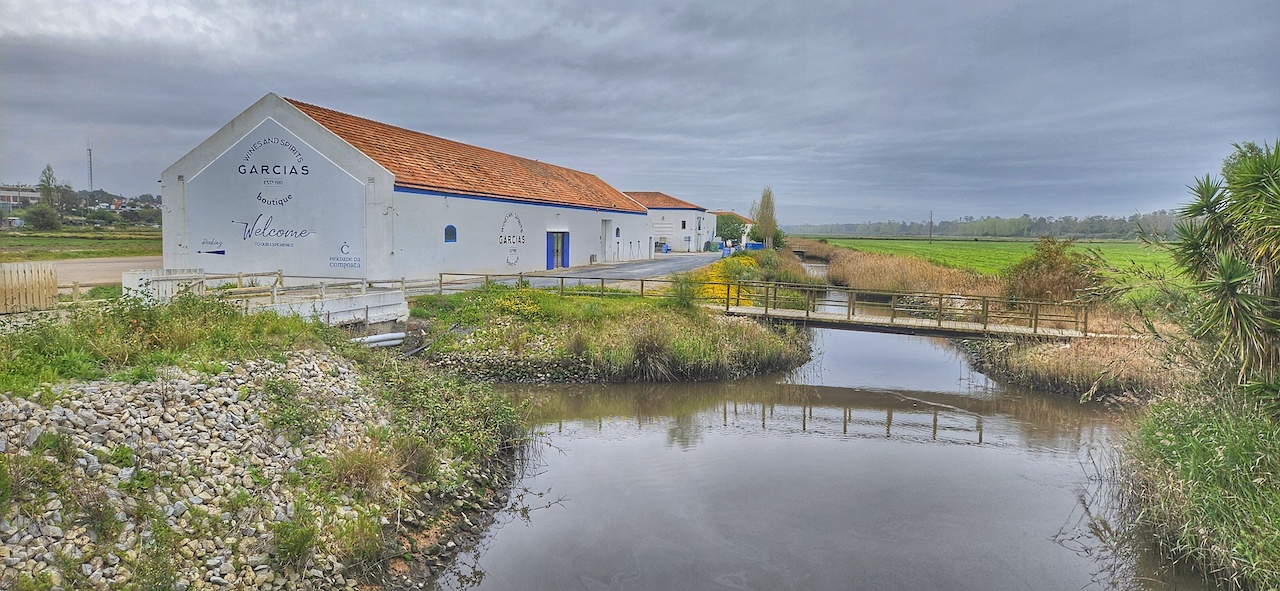
I love that old fishing harbour, very picturesque! The long beach of Comporta is Europes longest beach, from Troia to Sines. I surely understand that you like Comporta!
We love, love, love Comporta, lol
It has a certain magic for us. There’s a stillness yet such a great vibe that we adore. Kx